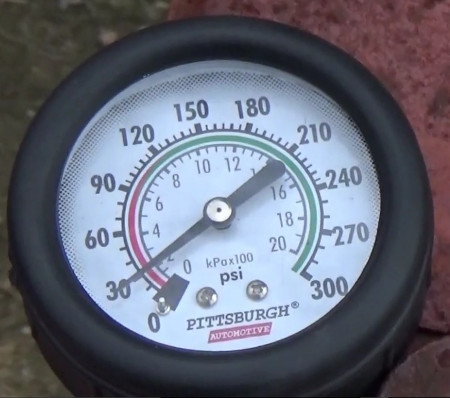How To Check Compression On A Small Engine
It is very easy to test a small gas engine for compression. A compression test will tell you if the valve seats need to be ground or if the piston rings are badly worn. In many cases the valve seats will wear out first and need to be ground in order to improve engine compression and performance.
To test a lawn mower, gokart, snow blower or other small gas engine for compression you will need a compression testor. This is a guage that attaches to the top of your engine. It fits into the spark plug hole and tells you the compression reading in PSI, or Pounds per Square Inch.

First, remove the spark plug of the engine to be tested and place it on a clean surface.
Next, find the fitting in your compression testor kit that fits the spark plug hole of the engine you are testing. Screw it into the spark plug hole and make it snug. Do not torque it down but simply make it finger tight. You do not want to damage the seal on the fitting.
Next attach the hose, if one was included, onto the fitting on the engine.

And last, attach the compression testor gauge to the hose or fitting.
To test your small gas engine for cylinder compression, simply pull the starter handle on manual start engines. If you have an electric start engine then simply turn on the starter key and run the starter for a few seconds.
When using a manual start engine, pull about five good strokes to make sure you get a proper reading on your compression gauge.

The gauge will raise fast on the first pull and then slowly rise up to its highest level and settle there. This is the reading that you want to take.
One important note is that some engines have a decompression valve to allow you to start the engine easier from a cold start. This will throw off your readings a bit. Check the engine specifications to be sure if your engines has this or not.
For a good running engine you will find the compression to be around 100 PSI. Even at 80 PSI the engine will run. But as you get below that range, the engine will be harder to start and will have less power. Below 60 or so PSI and the engine will most likely not even start

Any reading below 60 or so means you will have to either grind the valves or install new piston rings.
Surprisingly the engine used in this demonstration had a compression reading of only 30 PSI. (See image above). It is amazing that they were able to run the engine long enough to get the compression down this low. At this level the engine will never start without a major overhaul.
Watch the full video demonstration here: How To Test Compression On Lawn Mower ~ Gokart ~ Snowblower Engine
Stay tuned for more engine repair videos and articles...
About the Author
| Troy Reid |



